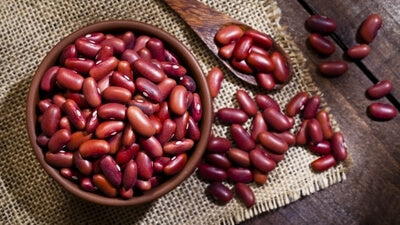AVAIL A FREE DIET PLAN

Lentil, are one of the world’s oldest and healthiest foods. What are they? Lentils are basically the seeds of legumes. They are easily identifiable by their lens shape and they look like tiny beans.
There are a variety of types and they can be differentiated by size or colour or both. They usually come in red, brown, green or black.
Many studies have shown, that legumes were first grown and harvested around 8000 B.C., and since then it has remained a staple and highly nutritious food source for millennia, especially in Asia and North Africa.
As they are usually categorized by colour, here is a quick overview of the different types of pulses and lentils:
These are the most common but the de-husked brown lentils are more orange/pink in appearance and widely consumed

These are also widely available and the de-husked ones area bright golden yellow in appearance and are just called Moong dal/Mung beans.

This type of lentil is a very light yellow when de-husked and are called Urad dal

This type of lentil is also very widely used. And it is one of the main ingredients to make the ever so popular Hummus.

This makes an excellent addition to a variety of dishes and salads and are one of the most popular choices as a pre or post-workout sprouts or even just a very healthy evening snack. Ground up, it also makes a type of chickpea flour called Besan which can also be used for a variety of foods

These have a somewhat different appearance from most other lentils as the name suggests. They are slightly larger than other lentils and have a kidney shape. They can be a dark brownish red or a light pale brownish pink-white.


Lentils, despite being one of the main, cheapest and easiest sources of a very wide variety of required nutrients like iron, zinc, potassium and Vitamin B, is often overlooked by people.
It is also one of the richest sources of plant-based protein. You can get upto 37% of your RDI (Recommended Daily Intake) of Iron, 36% of Phosphorus and 49% of Manganese, among others.
One of the benefits of Lentils is that they are also quite rich in fiber which helps in maintaining healthy intestinal bacteria and regular bowel movement, both of which are extremely necessary for a healthy life.
A beneficial plant compound, broadly called phyto-chemicals, many of which protect against chronic diseases such as heart disease and Type-II diabetes, are also abundant in lentils, especially polyphenols. Many of these polyphenols such as flavanols are also antioxidant and anti-inflammmatory.
According to some studies, polyphenols in lentils also stopped growth of cancerous cells especially of the skin. And perhaps most importantly, these polyphenols do not lose their potency after cooking.
Studies also found that the consumption of small amounts of lentils on a daily basis, helped in controlling LDL cholesterol and harmful triglycerides along with maintaining steady blood pressure.
It is quite a filling food too and keeps your appetite steady for longer, thus also helping regulate blood sugar levels.
On average, every 100gms of cooked lentils provides us with:
Along with macro and micronutrients such as:
Too much is not too good
Even though there are some amazing benefits of lentils it does not mean however that consuming a lot of lentils is always good for you. Like anything else, this also requires balance and a sensible approach.
Often many foods have certain components called anti-nutrients which inhibit the absorption of certain nutrients by our body.
Like spinach contains a lot of iron, but it also contains natural oxalic acid which binds to iron molecules and slow down or prevent its absorption by your body.
Lentils contain trypsin inhibitors and lectins. Small amounts of lentils daily are good but regular or excessive consumption of lentils can cause an increase in trypsin inhibitors and disrupt the production of the enzyme that breaks down the protein for absorption.
Lectin in excess amounts too can bind with some nutrients and prevent their proper use by our bodies, but in small amounts, can also promote anti-bacterial properties.
There are many other compounds in lentils such as Tannins and Phytic Acid, all of which, in small, recommended levels of consumption are harmless and often beneficial to us.
But in excess, these very same compounds can hinder the absorption of the vital micronutrients to our bodies.
Daily serving of 130 grams or ¾ cup is recommended for a healthy adult (Canada Medical Association Journal).
Research suggests that eating one serving a day of pulses can lower their LDL (bad) cholesterol by five per cent.
With all this newfound understanding of things; make sure to include lentils in your next meal.
You can also buy our Plant-based protein powder from Amazon here: